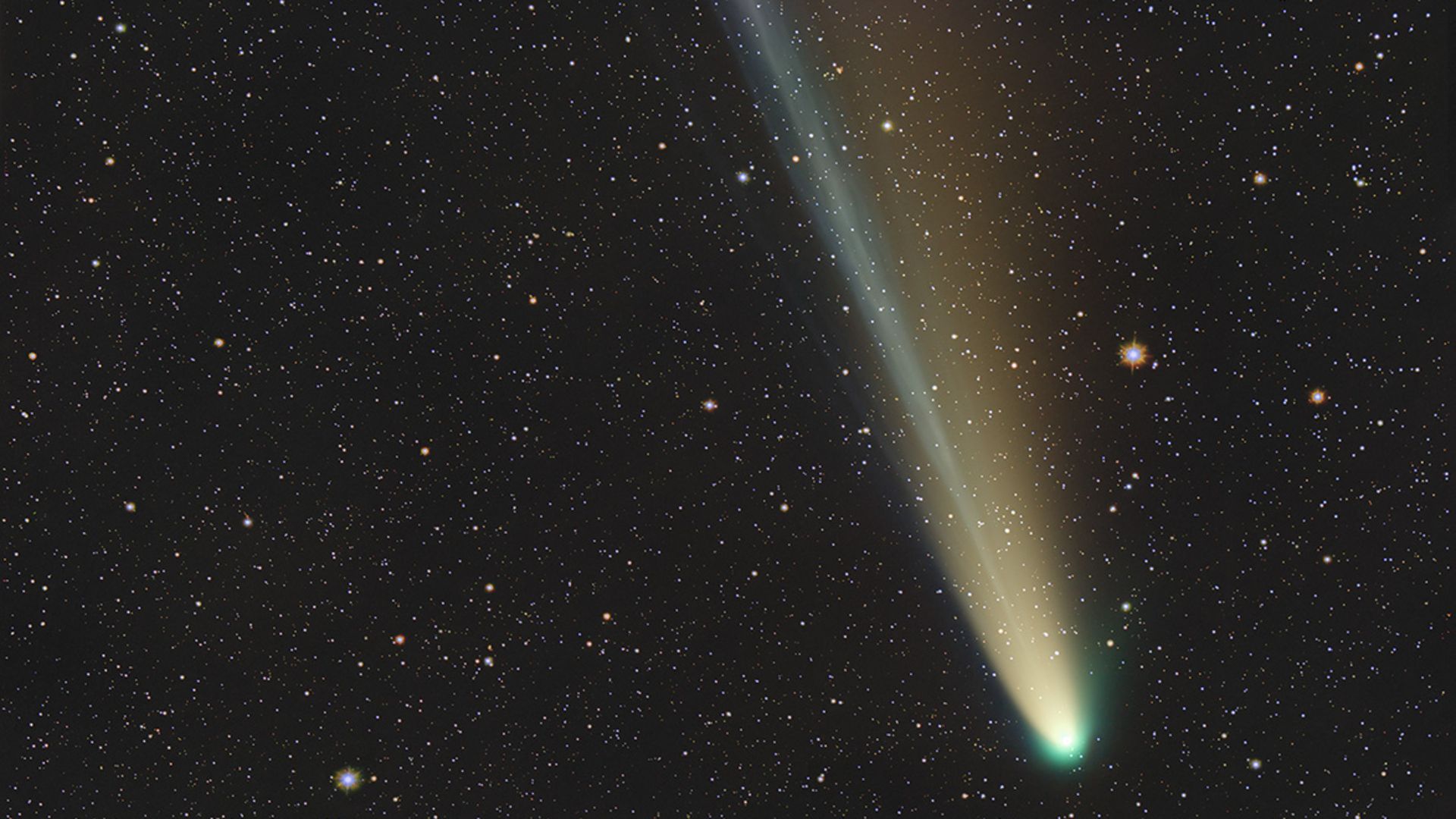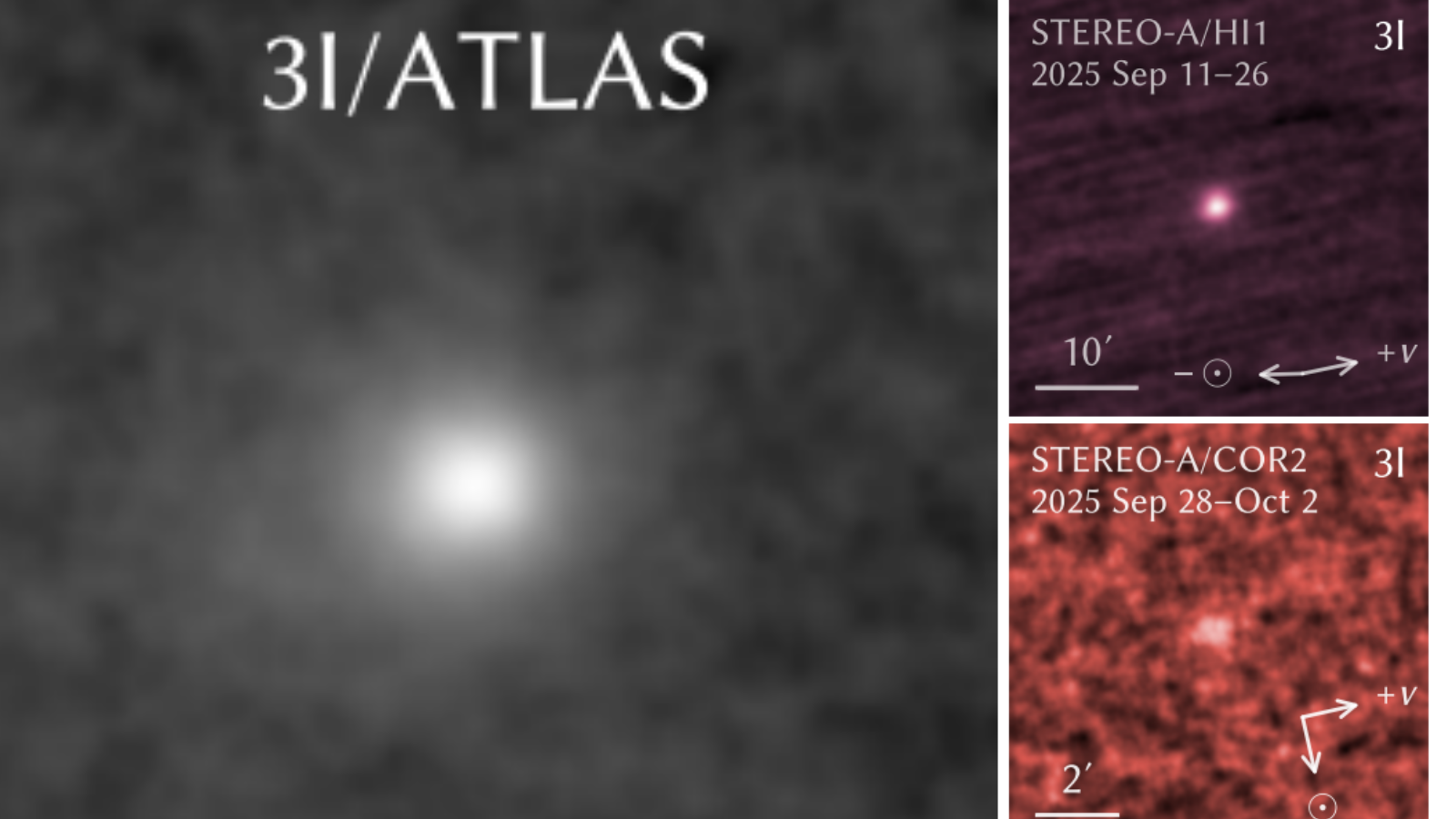Yesterday’s report on a non-gravitational acceleration of 3I/ATLAS near perihelion (discussed here) stems from data obtained by the Atacama Large Millimeter Array (ALMA) which indicated that 3I/ATLAS was 4 arcseconds away in Right Ascension from where it was supposed to be on October 29, 2025 if its trajectory was dictated by gravity.
As soon as I heard about the results, I used momentum conservation to calculate that the nucleus of 3I/ATLAS should have lost at least a sixth of its mass in order to accelerate that much as a result of cometary outgassing. The calculation goes as follows.
The non-gravitational force acting on 3I/ATLAS equals its mass times its non-gravitational acceleration:
M*a=(dM/dt)*v
where a is the non-gravitational acceleration, M is the mass, (dM/dt) is the mass loss rate and v is the ejection speed of the sublimated gas of volatiles from the surface of the nucleus, which I adopted to be lower than a few hundred meters per second — the thermal speed of related molecules at the perihelion distance. This gives the total evaporation time:
t=M/(dM/dt)=v/a
The measured value of the non-gravitational acceleration a~0.02 millimeters per second squared gives t<6 months. It took about a month for 3I/ATLAS to cross the perihelion distance scale of 203 million kilometers, so it must have lost at least a sixth of its mass during that time.
The mass loss rate measured by the Webb telescope (reported here) of 150 kilograms per second did not yield a detectable non-gravitational acceleration in the five months prior to October 2025. This led me to conclude (as described here) that the mass of 3I/ATLAS is at least 33 billion tons. This means that the dense cloud around it should carry at least 5.5 billion tons.
This implies that we should detect a massive cloud of gas around 3I/ATLAS in November and December 2025 if the non-gravitational acceleration resulted from cometary evaporation.
On December 19, 2025, 3I/ATLAS will arrive closest to Earth at a separation of 269 million kilometers, when hundreds of ground-based telescopes as well as the Hubble and Webb space telescopes will have the best opportunity to observe it. Between November 27, 2025 and January 27, 2026, 3I/ATLAS will be monitored by the International Asteroid Warning Network (IAWN) campaign (as described here). If the extensive IAWN data will not reveal a massive cloud of gas around 3I/ATLAS, then cometary evaporation would not constitute a natural explanation for its non-gravitational acceleration.
If we do not observe a massive cloud of gas around 3I/ATLAS in December, then the reported non-gravitational acceleration near perihelion might be regarded as a technological signature of a propulsion system.
A non-detection of an accompanying gas cloud will bring the sensation of Déjà vu. The first interstellar object 1I/`Oumuamua exhibited non-gravitational acceleration without showing any sign of gas or dust around it, even after deep observations by the Spitzer space telescope (as reported here). This led comet experts to define 1I/`Oumuamua as a dark comet, namely a comet which does not show a visible tail. Given that a tail is the defining signature of a comet, the notion of a `dark comet’ is an oxymoron. A spacecraft with a propulsion system could show a non-gravitational acceleration without cometary evaporation. It could be classified by comet experts as a dark comet in the same way that a cave dweller would classify a cell phone as a rare rock.
A few reporters asked me today about the strong statements made by the science popularizer Brian Cox who argued forcefully that 3I/ATLAS is definitely a natural comet. I explained that Brian Cox did not write a single scientific paper about 3I/ATLAS. He acts as a science popularizer rather than a researcher who is engaged with the related science concerning 3I/ATLAS. In comparison, I wrote 11 scientific papers in recent months about 3I/ATLAS (accessible here). Rather than engage in sweeping statements, Brian should be challenged to explain the 9 anomalies associated with 3I/ATLAS (with 8 anomalies compiled here and the 9th anomaly being its unprecedented recent brightening while being bluer than the Sun, discussed here). Scientific truth is not decided by a popularity contest but by attention to data — especially when it is anomalous.
ABOUT THE AUTHOR
Avi Loeb is the head of the Galileo Project, founding director of Harvard University’s — Black Hole Initiative, director of the Institute for Theory and Computation at the Harvard-Smithsonian Center for Astrophysics, and the former chair of the astronomy department at Harvard University (2011–2020). He is a former member of the President’s Council of Advisors on Science and Technology and a former chair of the Board on Physics and Astronomy of the National Academies. He is the bestselling author of “Extraterrestrial: The First Sign of Intelligent Life Beyond Earth” and a co-author of the textbook “Life in the Cosmos”, both published in 2021. The paperback edition of his new book, titled “Interstellar”, was published in August 2024.
Source link


